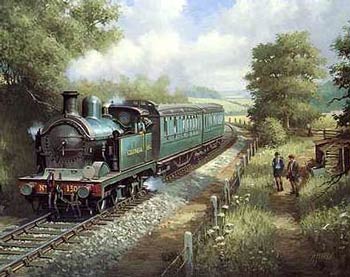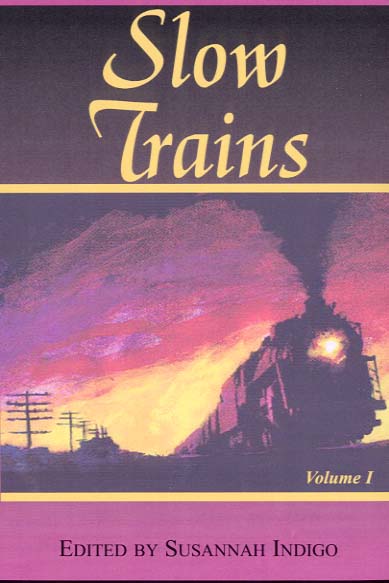
Traveling Through America's Backyard
by Brently Johnson
I confess I’m a sucker for trains. I’m wrapped up in the myth, the steam, the rackety-rack-rack of the wheels swallowing up track.
When I think of trains, I’m wooed by their slinky figures on the horizon in a painting by Hopper or Monet, exhaling muscled clouds of smoke just
beyond a farmer’s field. Trains summon the romance that sleeps within us. What good movie, or classic at least, doesn’t contain a scene on a
train, two lovers in a compartment with the world hurrying by? It’s as if time is suspended, and the train itself becomes this place—inhabited,
lovely, completely untroubled.
Riding the Coast Starlight from Portland to San Diego, the train slowly pulls from its berth and across the steel bridge on a dreary
Oregon day, the rain flinging itself up the Willamette and onto our cozy windows. Quickly, we enter the stockyards outside of town, then the
backlots of storage units, and the littered properties of those who could only afford to have a train rumbling along their backporch. Even this is
considered art, the unscrupulous details of tricycles spilled over beneath wet laundry on the line, the abandoned husks of cars, lumber piles,
scrap metal piles, the papermills, the mean, brown dogs barking at the lounge car whipping by.
We move deeper into the frame, traveling south through the canvas of the coast, seeing the brushstrokes of palm leaves and green,
California winter hills. I am jostled by the endless rows of garlic near Gilroy, artichokes outside Salinas, watertowers proudly boasting the names
of towns I’ve never read before. Cows graze the San Andreas fault above King City, and I look for crooked fences, sudden signs of the earth’s
shifting in its seat.
And this vision I also paint: on my elbows in the middle of the night, too excited to sleep, watching trees, weighted with snow, lean hard
towards the train as we near the Willamette Pass. And this: my wife’s face kissing the window while the ocean slaps less than forty feet away
and oil derricks in the distance appear almost peaceful, like blinking Christmas trees. And finally this: three women on horseback from a grassy
hill waving to the train as we pass them outside Paso Robles where the air smells rich and loamy with vineyards.
“Amtrak is like Greyhound on rails.” This is not entirely untrue. That sexy figure of the locomotive I imagined before is now more
beast-like, sluggish, antiquated—even sad. Like a great fighter, late in his years, stumbling around the ring, it’s as if we are waiting, almost
wishing, for the rail system to just go down. And when it does, its length smacking the floor, history derailed and rusting in the rain, we feel a
part of us cut in half, nauseous with shame. Is this our fault, so busy, so obsessed with the freedom of a car, that we have killed the train? How
much of its decline is caused by things larger than us -- the car companies, the oil companies -- that are beyond our control? Is it just an
inevitable change? Whichever the cause or combination thereof, if the train in this country were to finally fall to euthanasia, we would all be
severed from an era that is barely alive today. Even if that era is flawed in its romance, even if it now passes through junkyards where the
farmer’s fields once stood, it is a place we can imagine, derive some satisfaction from.
When I heard Amtrak is seriously facing budget cuts that will cancel many long distance routes, such as the Empire Builder from Seattle
to Chicago, I sensed another art form dying out, an animal nearing its extinction. Like the great works of arts and legends we live our lives by,
trains permit us to wallow in our imagination, to believe, even if it is a myth, in something.
As we reach the Soledad station peeling in the sun, the spanish tiles baked to faded orange, I realize how closely it resembles a
museum—the intricate architectures that ripen with age. Families wait with their luggage. Men stand inside the cool doorways, shaded from the
sun. There are more people than I imagined milling around, some excited and others dull with routine. Children chase gulls from the benches. A
voice is muffled on the intercom announcing our arrival. The conductor deboards and smokes on the platform, occasionally kicking small gravel
back onto the tracks. An older couple approaches him to insure they’re making for the right train. He drags on his cigarette before nodding,
understanding the answer he must give. They watch the smoke lift from his lips as he tells them the direction this train is heading.


 Slow Trains, Volume 1 in print
Slow Trains, Volume 1 in print
